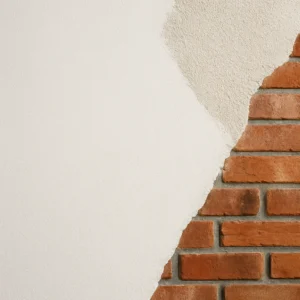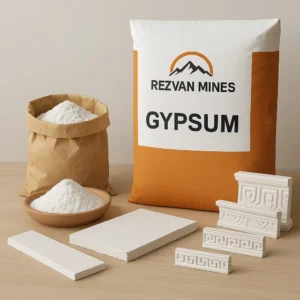Introduction
In the fast-paced world of construction, materials that offer efficiency, quality, and sustainability are highly valued. Among these, Gypsum Plaster Benefits stand out for builders, architects, and contractors who want superior results with minimal hassle. Understanding Gypsum Plaster Benefits is key to making smart choices for both residential and commercial projects.
This article explains why Gypsum Plaster Benefits are transforming modern construction, with practical insights into its advantages.
1. Faster Application and Drying Time
A major reason builders choose gypsum plaster is its fast application and drying time. Unlike cement plaster, which needs water curing and several days to set, gypsum plaster dries within hours. This allows painters and finishers to start sooner, cutting project timelines significantly.
One of the crucial Gypsum Plaster Benefits is this time-saving feature. According to Gypsum Association, using gypsum plaster can reduce project finishing time by up to 50%, which translates into lower labor costs and quicker occupancy.
2. Smooth, Flawless Finish
Another top advantage among Gypsum Plaster Benefits is its ability to produce a smooth, white surface ready for painting or wallpapering. Its fine particle size ensures an even texture that requires little to no sanding, saving time and effort while delivering professional-quality results.
The smoothness achieved with gypsum plaster enhances interior aesthetics, making it ideal for modern homes, offices, and commercial spaces where clean, polished walls are desired.
3. Fire Resistance
One of the critical Gypsum Plaster Benefits is its natural fire resistance. Gypsum contains chemically bound water molecules that, when exposed to heat, release as steam and slow the spread of fire. This built-in safety feature makes gypsum plaster an important material for fire-rated walls and ceilings in both residential and commercial construction.
For more details about fire-resistance ratings, check British Gypsum.
4. Thermal and Acoustic Insulation
Beyond surface aesthetics, Gypsum Plaster Benefits extend to insulation. Gypsum plaster helps reduce sound transmission between rooms, providing acoustic comfort, especially in hotels, apartments, and offices. It also adds thermal insulation, contributing to better energy efficiency by maintaining indoor temperatures.
When combined with insulation boards, gypsum plaster can further enhance a building’s thermal and acoustic performance, making spaces more comfortable and reducing energy costs.
5. Eco-Friendly and Sustainable
In today’s environmentally conscious world, sustainability is essential. One of the often-overlooked Gypsum Plaster Benefits is its eco-friendly profile. Gypsum plaster is non-toxic, produces less dust during application, and generates minimal waste.
Additionally, gypsum is a naturally abundant material, and waste plasterboards can be recycled into new plaster products, reducing environmental impact and promoting a circular economy in construction.
6. Minimal Shrinkage and Cracking
Unlike cement plaster, gypsum plaster exhibits minimal shrinkage as it dries. This is one of the valuable Gypsum Plaster Benefits because it prevents surface cracks, reducing maintenance and repair costs. A wall finished with gypsum plaster remains smooth and crack-free for years, enhancing its durability and aesthetic appeal.
7. Versatile Design Applications
One of the creative Gypsum Plaster Benefits is its versatility in design. Gypsum plaster can be molded into decorative elements like cornices, moldings, arches, and custom shapes. This flexibility allows architects and interior designers to create unique, artistic features without compromising structural integrity.
Gypsum plaster is widely used for false ceilings, partition walls, and decorative applications that require detailed finishing.
8. Cost-Effective Over Time
Although the initial cost of gypsum plaster may be slightly higher than cement plaster, Gypsum Plaster Benefits include long-term savings. Faster installation, less labor, minimal maintenance, and fewer repairs lead to overall cost reductions in the life cycle of a building.
Builders who understand Gypsum Plaster Benefits can deliver projects faster, better, and more economically.
9. Healthy Indoor Environment
Another essential point in Gypsum Plaster Benefits is its contribution to healthier indoor environments. Gypsum plaster regulates humidity by absorbing excess moisture and releasing it when the air is dry, creating a more balanced indoor climate.
This property helps prevent mold growth, improving air quality inside homes and buildings.
Internal Link Suggestion:
👉 Check out our Fire Resistant Gypsum for added safety in modern buildings.
Conclusion
In conclusion, Gypsum Plaster Benefits cover a wide range of advantages: faster application, smooth finish, fire resistance, thermal and sound insulation, sustainability, crack prevention, design flexibility, cost-effectiveness, and healthier interiors. These benefits make gypsum plaster an ideal material for modern construction.
Builders, designers, and contractors who choose gypsum plaster can deliver superior-quality spaces that meet both aesthetic and functional demands.
Understanding Gypsum Plaster Benefits is key to staying ahead in today’s competitive construction industry.



